The Molyvoti, Thrace, Archaeological Project is a Greek-American scientific expedition in northwestern Greece, a co-operation (synergasia) between the Ephorate of Antiquities of Rhodope and the American School of Classical Studies at Athens (ASCSA), represented by Princeton University. MTAP received a permit from the Hellenic Ministry of Culture for excavation and survey 2013-2015 and was awarded a second permit for 2019-2021, extended 2022-2023 due to COVID.
The project explores an Archaic-Classical trading port (emporion) and polis often identifed as ancient Stryme. It combines excavation and pedestrian surface survey to investigate the relationship of settlement to its landscape from a diachronic perspective. Of particular interest is the activity of Greek settlers in the Archaic and Classical periods, as well as changes in the environment and in communication and trade networks over the longue durée.
Stryme was established by Greek settlers from the island of Thasos in the Archaic period, the easternmost colony (or apoikia) of that powerful island. It was quickly a bone of contention, fought over by Thasos and nearby Maroneia on at least two occasions (Archilochus; Demosthenes). It appears to have fallen under the political and economic power of Maroneia at least by the 4th century BC. The site had access to rich grain fields, to a maritime network oriented toward the eastern Aegean, and to a road network extending into the Thracian heartland. It was destroyed 350-340 BC and briefly reoccupied ca. 325 before abandonment in the early 3rd century BC. In the Late Roman and Byzantine periods, there were small farmsteads on the peninsula and a settlement on the headland.
The first phase of MTAP made major contributions to our understanding of the settlement and the region. It established the dimensions of the city and its grid plan, identified harbors, and tracked how the coastline and the course of the nearby river changed. It provided a new chronology of the site and excavated, for the first time at Molyvoti, a complete Classical house (The House of the Gorgon), with multiple 4th-cen. BC architectural phases. The recovery of bones, plant remains, shells, and pollen revealed the types of diet at the site and the changing relationship of the settlement to the landscape and the sea. The surface survey provided data on the differential use of space within the city walls and also demonstrated the changing relationship between the city and its chora. Furthermore, it showed how settlement patterns in the landscape developed over time, documenting, for example, the placement of tumuli on the landscape in the Classical period and the nucleation of settlement in the Byzantine period. Analyses of discrete aspects of material culture (amphoras, coins, lamps, graffiti) also made contributions to scholarship, elucidating in particular the trading networks to which the emporion belonged.
The second phase of the project (2019-2023) extended the scope of the surface survey and found the edges of the chora and shifts in settlement patterns caused by the establishment of the Via Egnatia. It excavated a second Classical house (The House of Hermes), offering a comparative data set for the House of the Gorgon. Finally, it excavated a Hellenistic extra-urban sanctuary.

